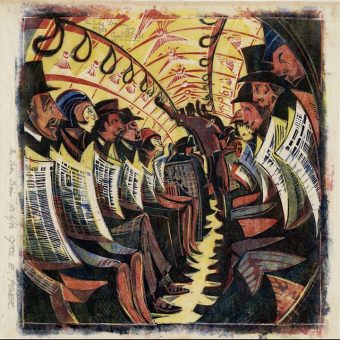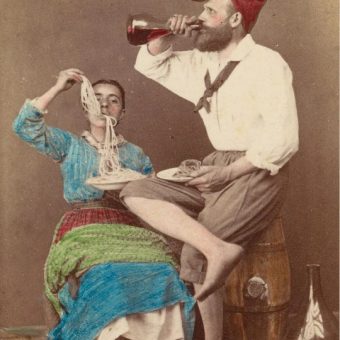Dougal Dixon’s Man After Man : An Anthropology of the Future (1990) begins with the impact of genetic engineering. “For 200 years modern humans morphed the genetics of other humans to create genetically-altered creatures. The aquamorphs and aquatics are marine humans with gills instead of lungs. One species – the vacuumorph – has been engineered for life in the vacuum of space. Its skin and eyes carry shields of skin to keep its body stable even without pressure.”
Man After Man is the British geologist and author’s third and final instalment in his trilogy of speculative evolution books: After Man (1981), The New Dinosaurs (1988) and Man After Man (1990). The books imagine futures and alternate animals to explain various natural processes, including evolution, natural selection, zoogeography and climate change.
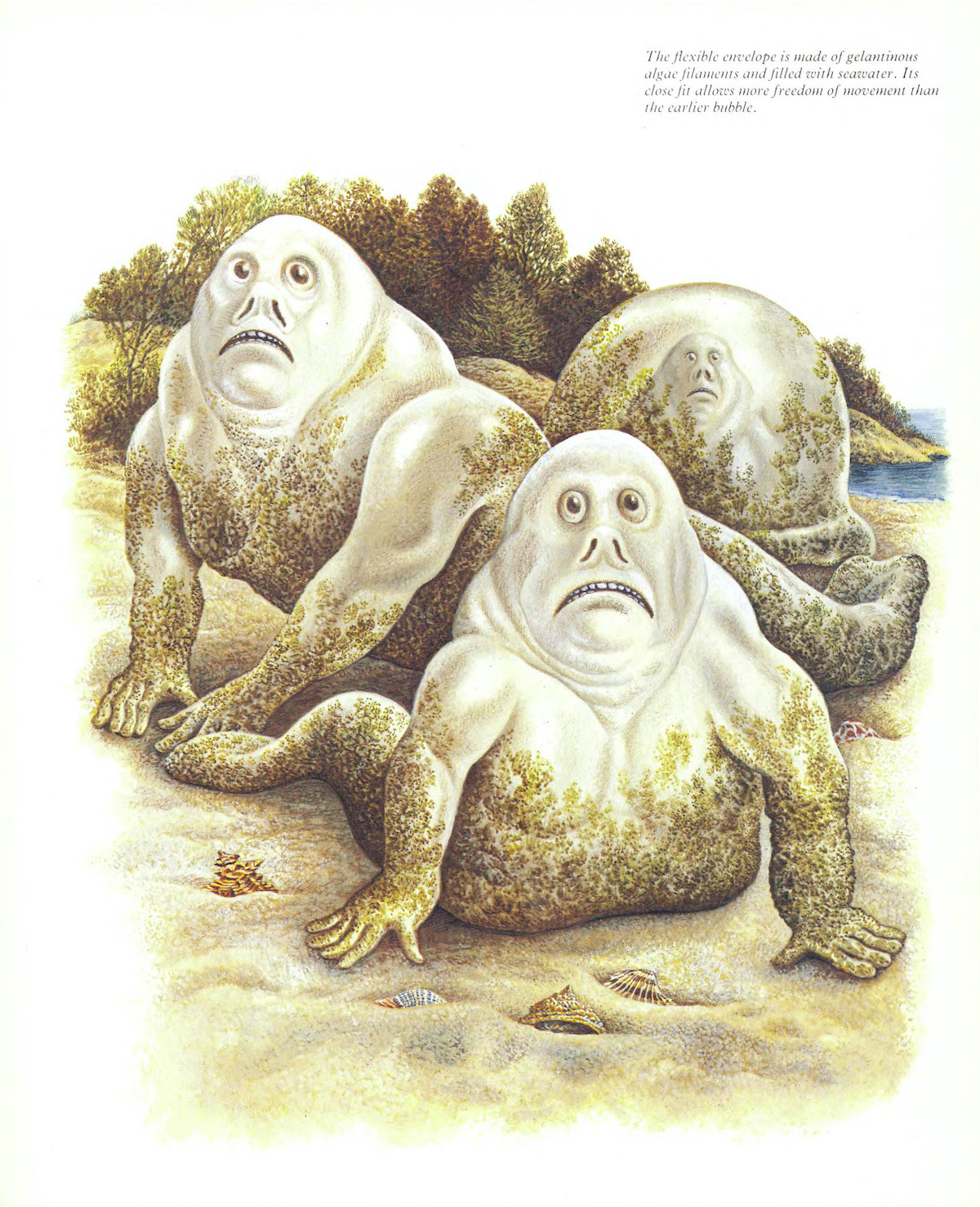
“Civilization eventually collapses, with a few select humans escaping to colonize space. The humans that manufactured these species degrade to simple farmers and following a magnetic reversal, were driven to extinction. Other humans, the Hitek, become almost totally dependent on cybernetic technology. With Magnetic reversal imminent, the Hitek built genetically altered humans to occupy niches: Genetically-altered humans include a temperate woodland species, a prairie species, a jungle species, and a tundra-dwelling species.
“Since then the genetically-altered humans must face a new phenomenon. They can no longer be genetically tweaked in a lab, so all modifications must naturally evolve. Many new forms resulted from natural selection. Socials, colonial humans with a single reproductive parent, Fishers, otter-like fishing humans, Slothman sloth-like humans, Spiketeeth, saber-toothed predatory humans, and even parasitic humans developed through natural changes.”
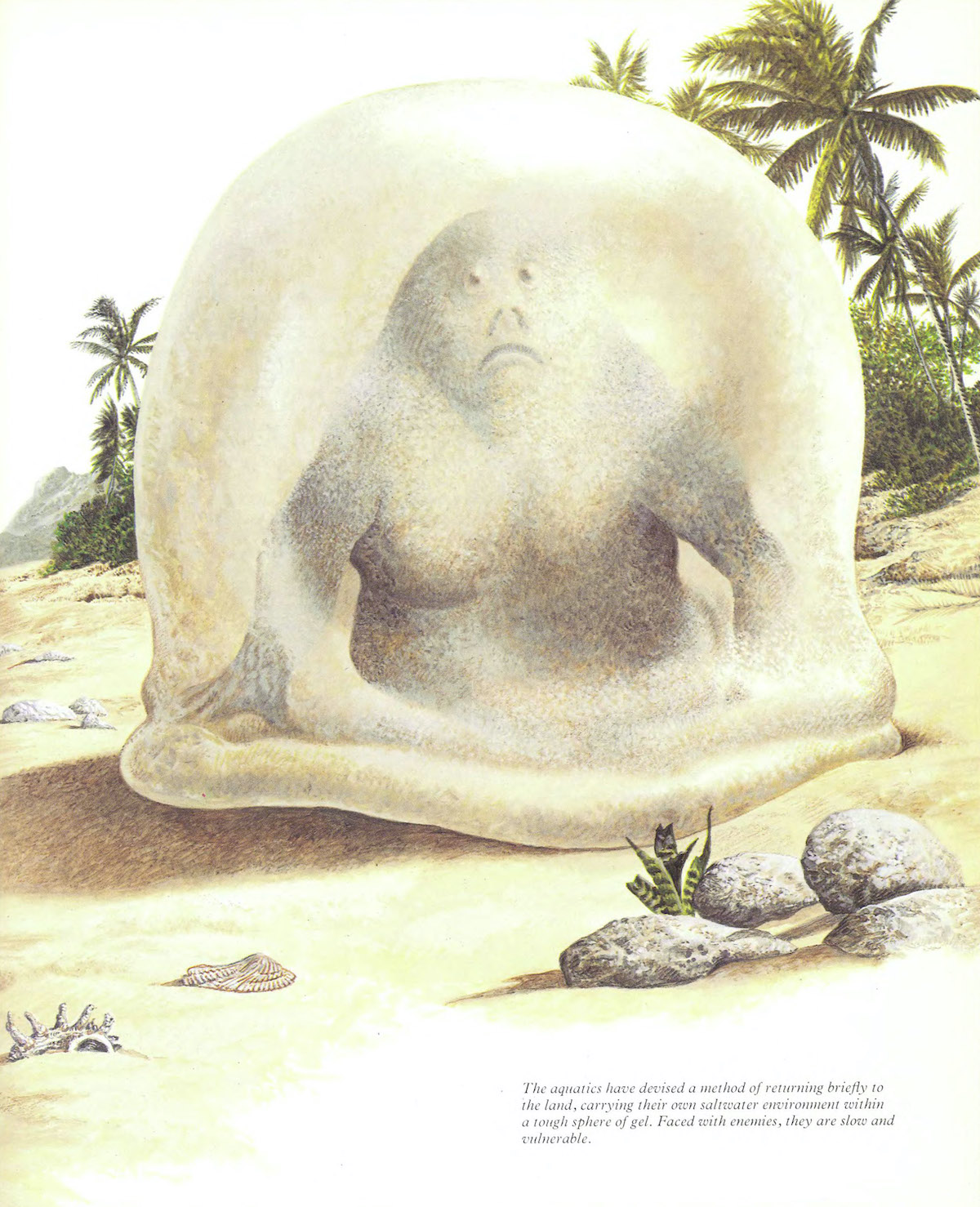
“After five million years of uninterrupted evolution, the descendants of modern man that retreated into space returned. Then the world changed dramatically. Earth was terraformed and covered in vast alien cities. The humans and other life forms in this new Earth must breathe air with low oxygen content. Thus the alien invaders use cyborg-technology to fuse the bodies of the few human species they find useful on the planet with air tanks and respiration systems. Genetic modification also returned and giant building humans and tiny connection humans were bred to aid city construction. Genetically created horse-like men serve as mounts for the invaders. Some engineered human species even became farmed like pigs or cattle. As with all civilization, this new era of man fell apart once again.
“Eventually the spacefaring humans left, the Earth was left in ruins. With barely any oxygen left in the Earth’s atmosphere, all terrestrial life on the planet perished. At the bottom of the world’s oceans, at the oases that were the underwater hot springs, life continue. In the abyss, was Piscanthropus profundus, a deep-sea descendant of the now-extinct Aquatic evolved. It is implied that Piscathropus profundis would eventually recolonize Earth’s surface.”
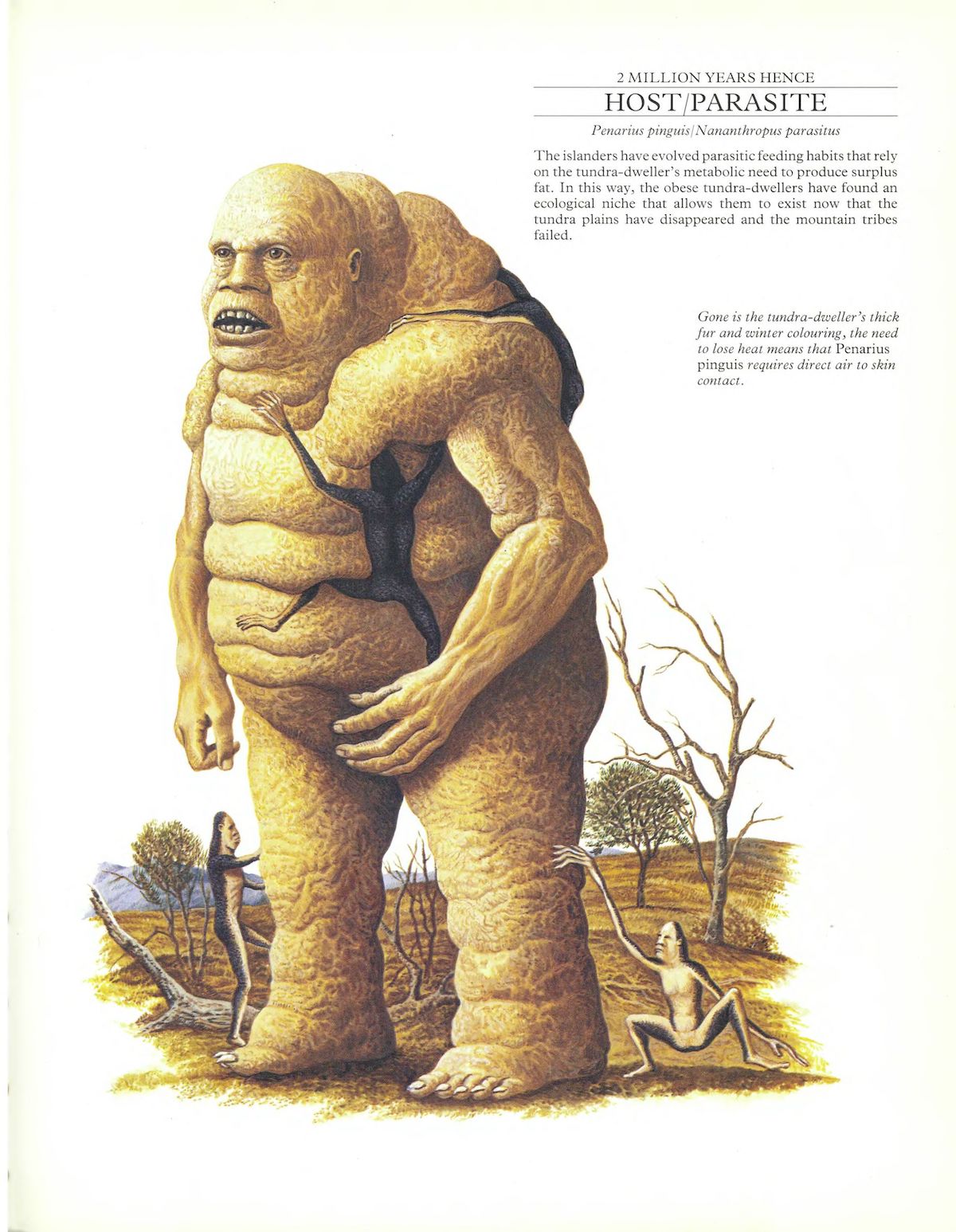
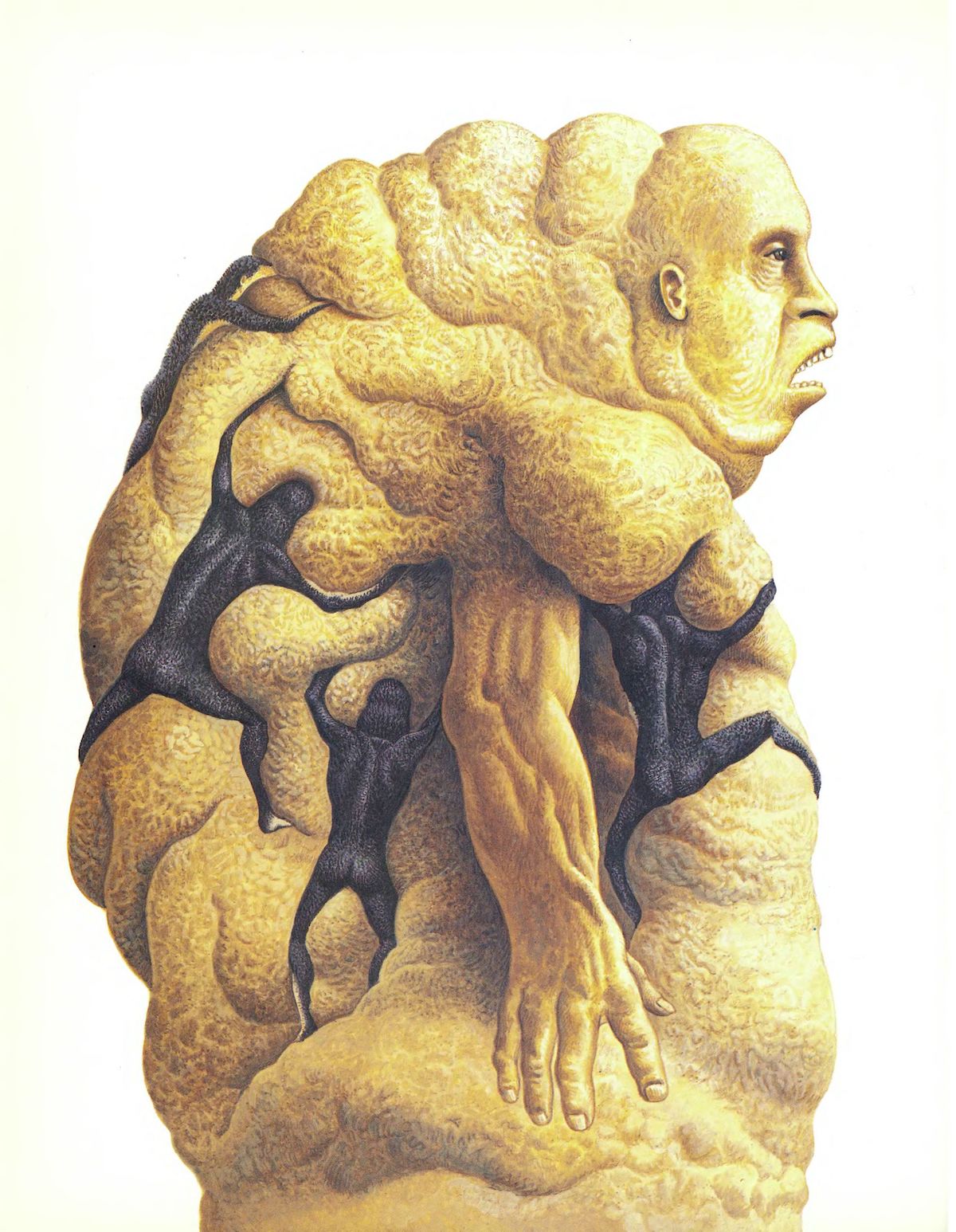
“As a child I was always struck by The Time Machine, by H. G. Wells, in particular by the part at the end where he goes to the far future and everything has changed: there are the giant crabs and so on. I was always artistic as a kid. I remember at the age of 8 or 10 years old, drawing comic strips, and one of them was actually my own retelling of The Time Machine. I had fun creating my own future creatures that had evolved from those of the modern day, featured there in the background.”
– Dougal Dixon (via)

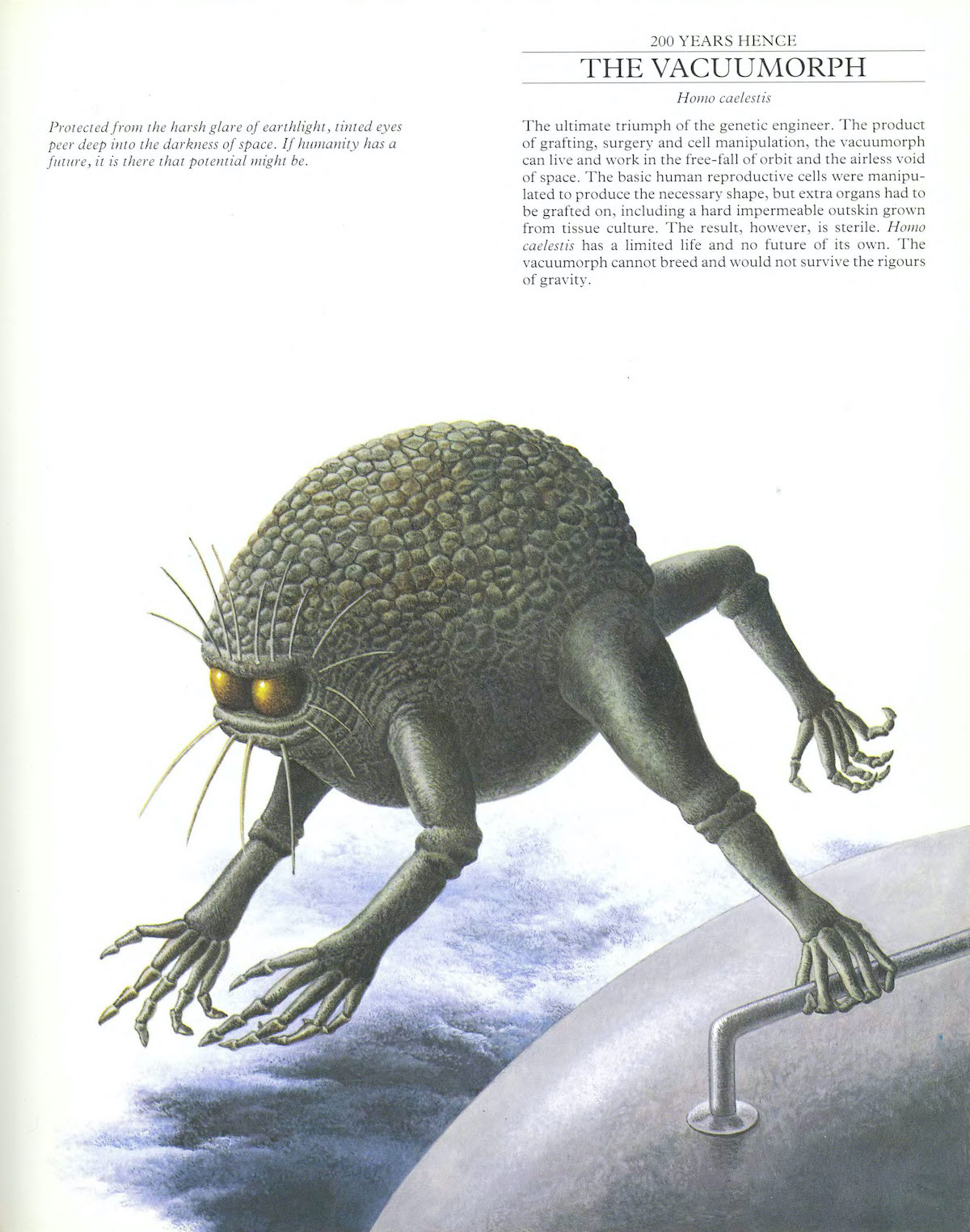
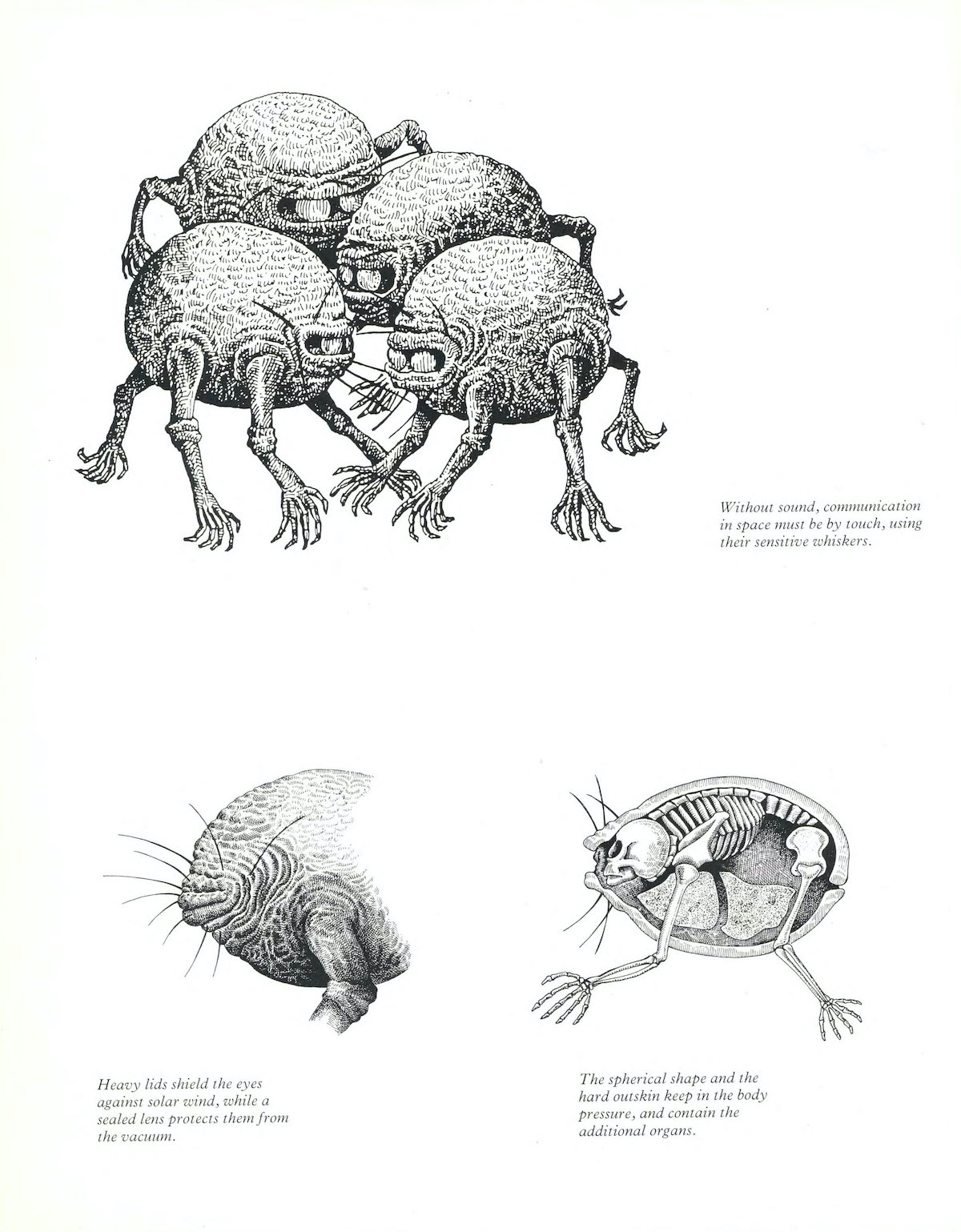
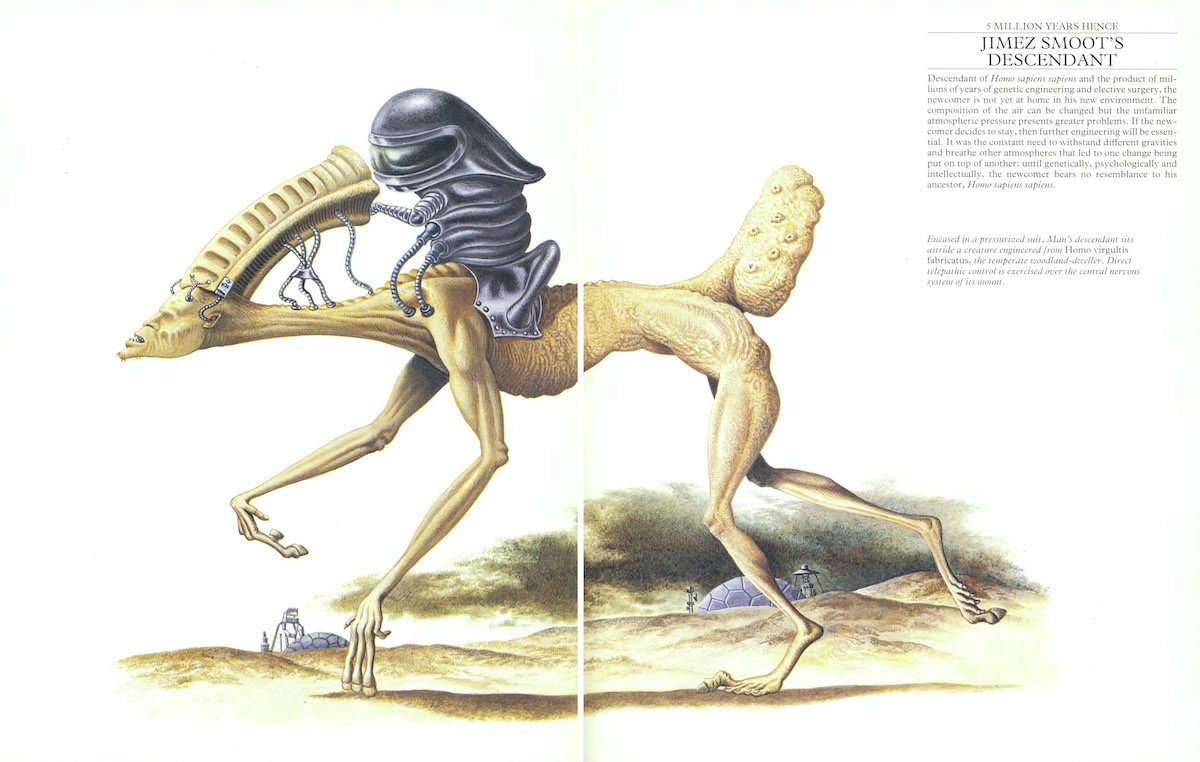
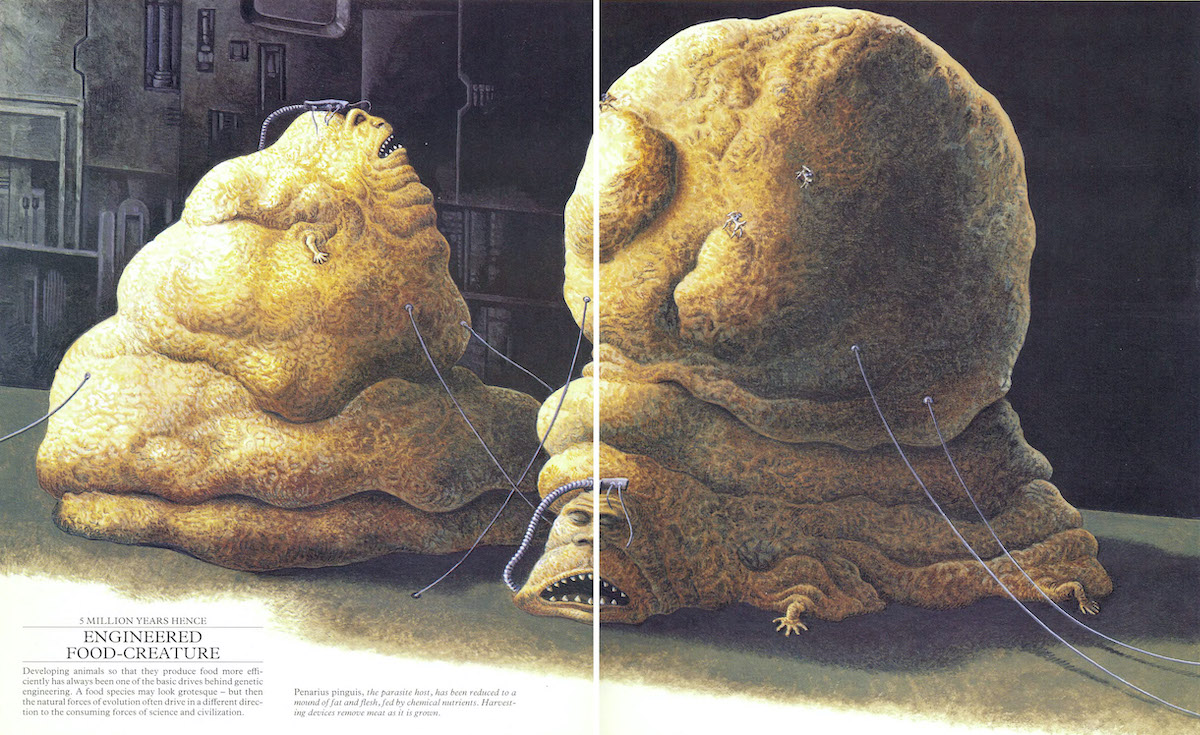

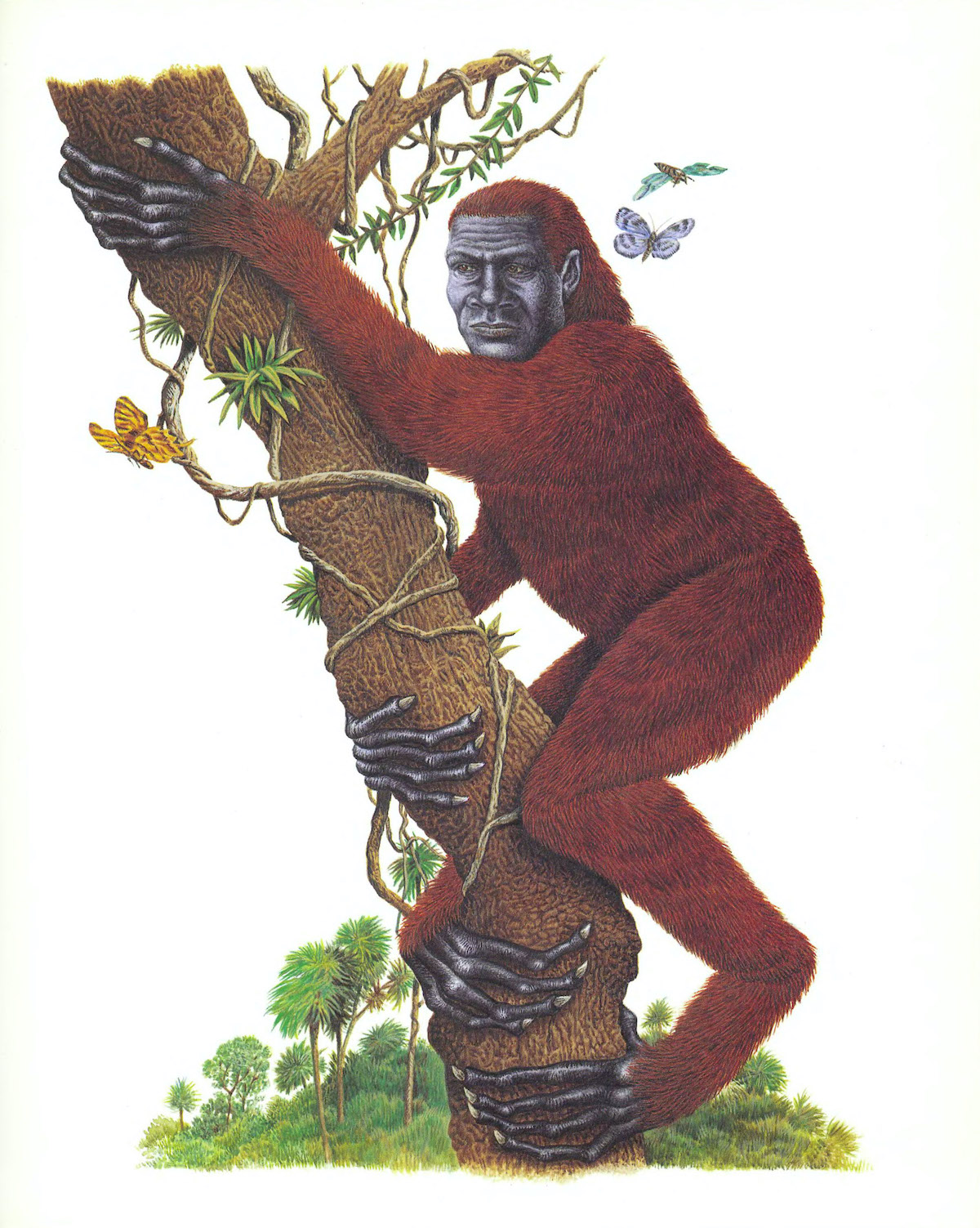


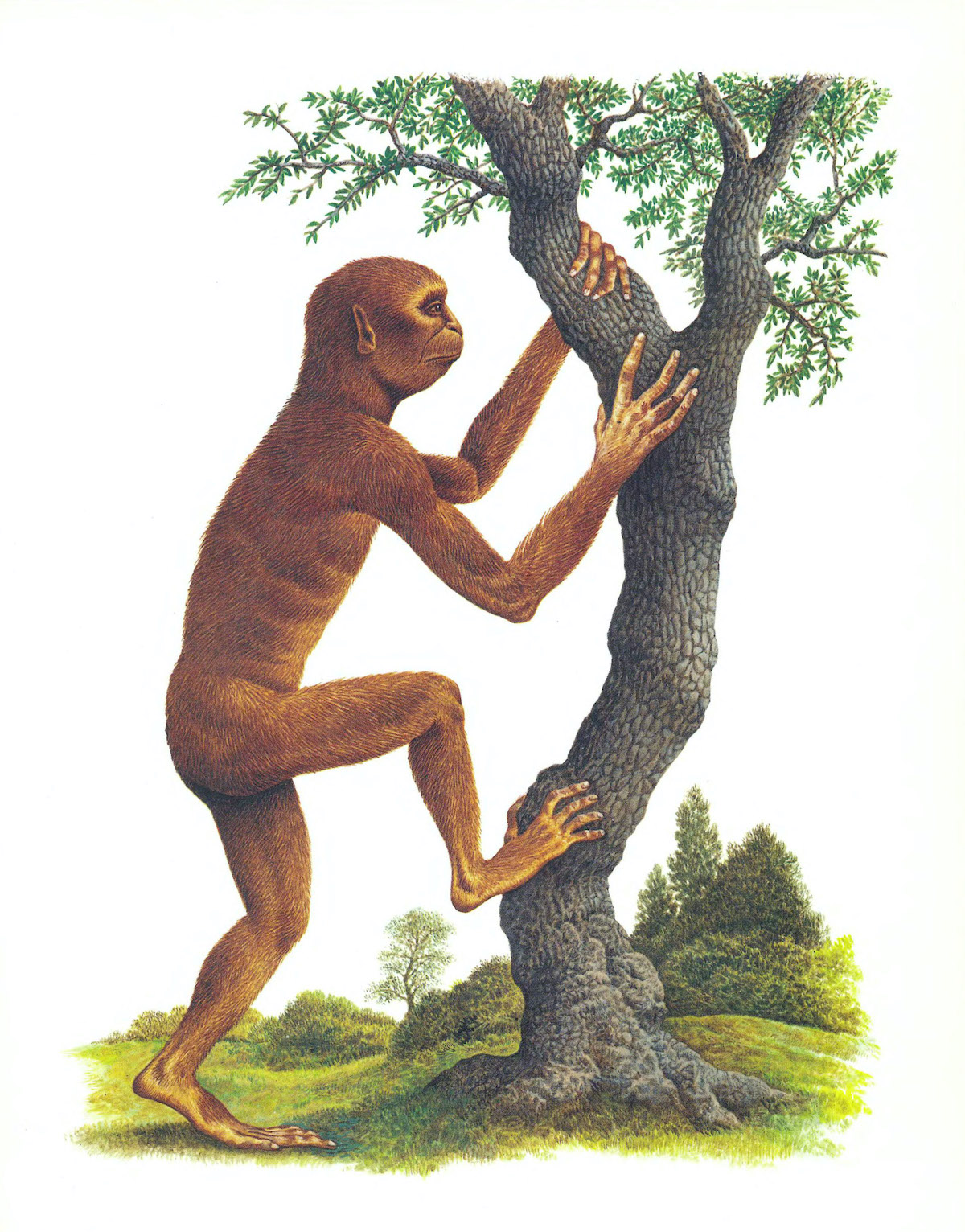
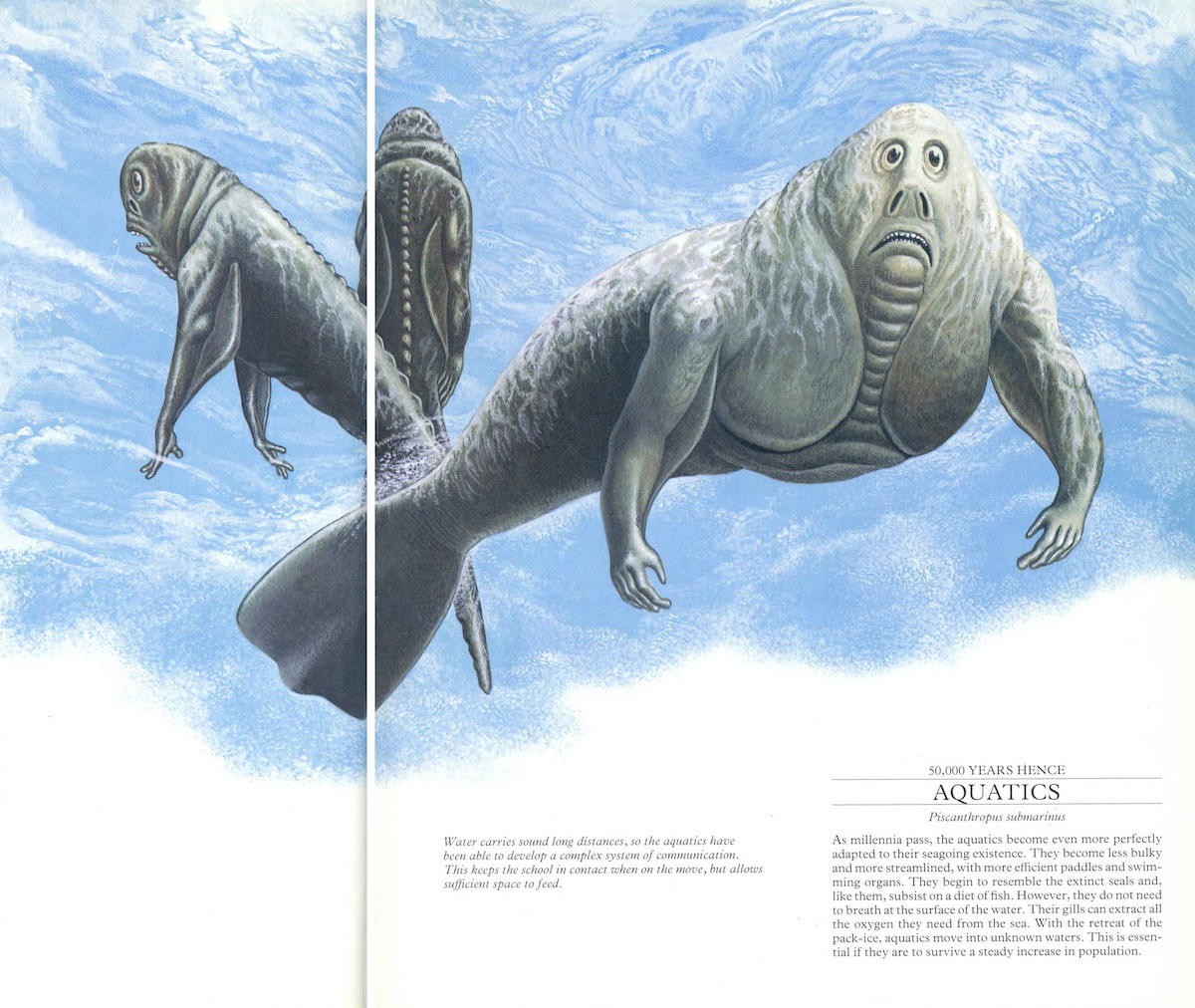

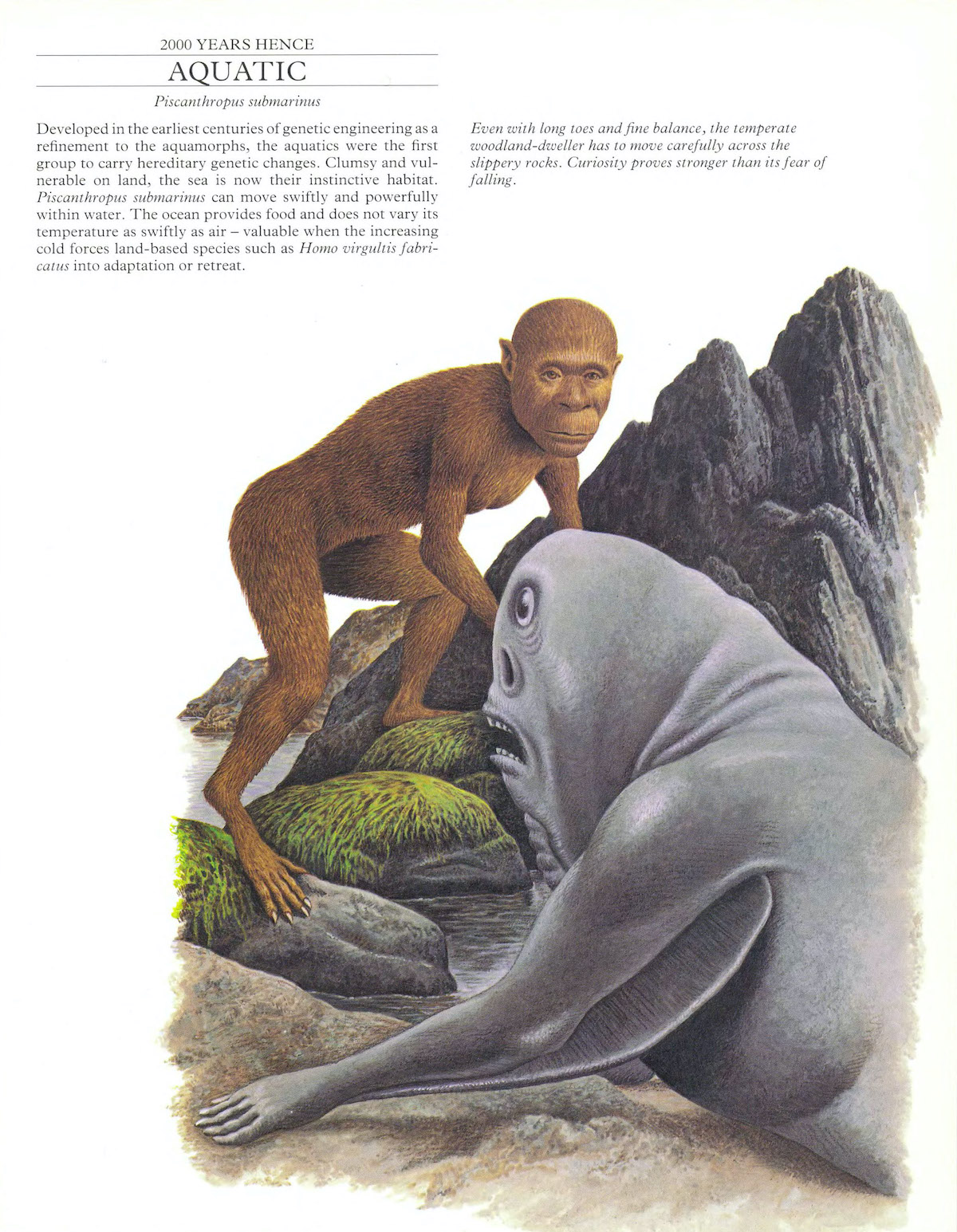


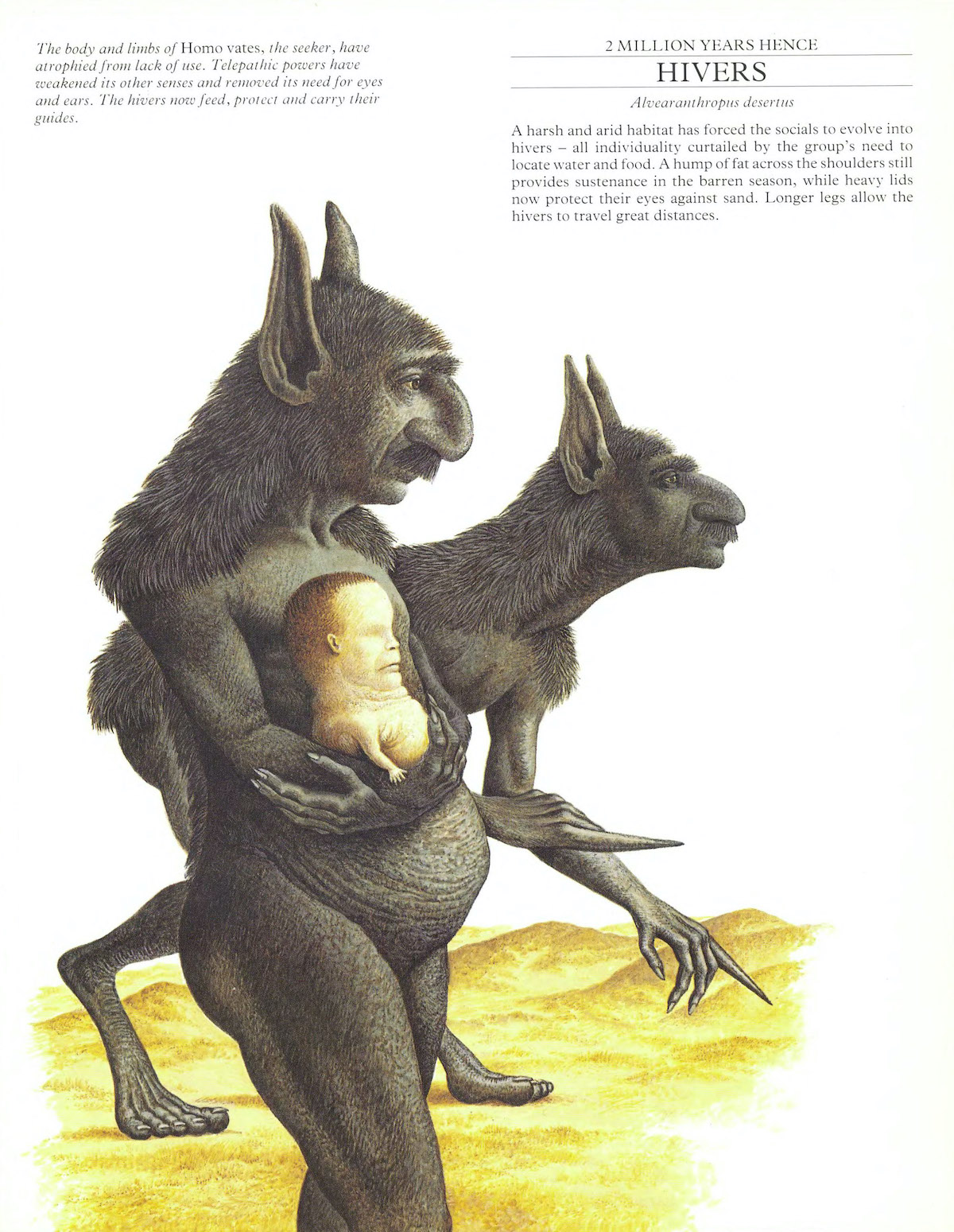

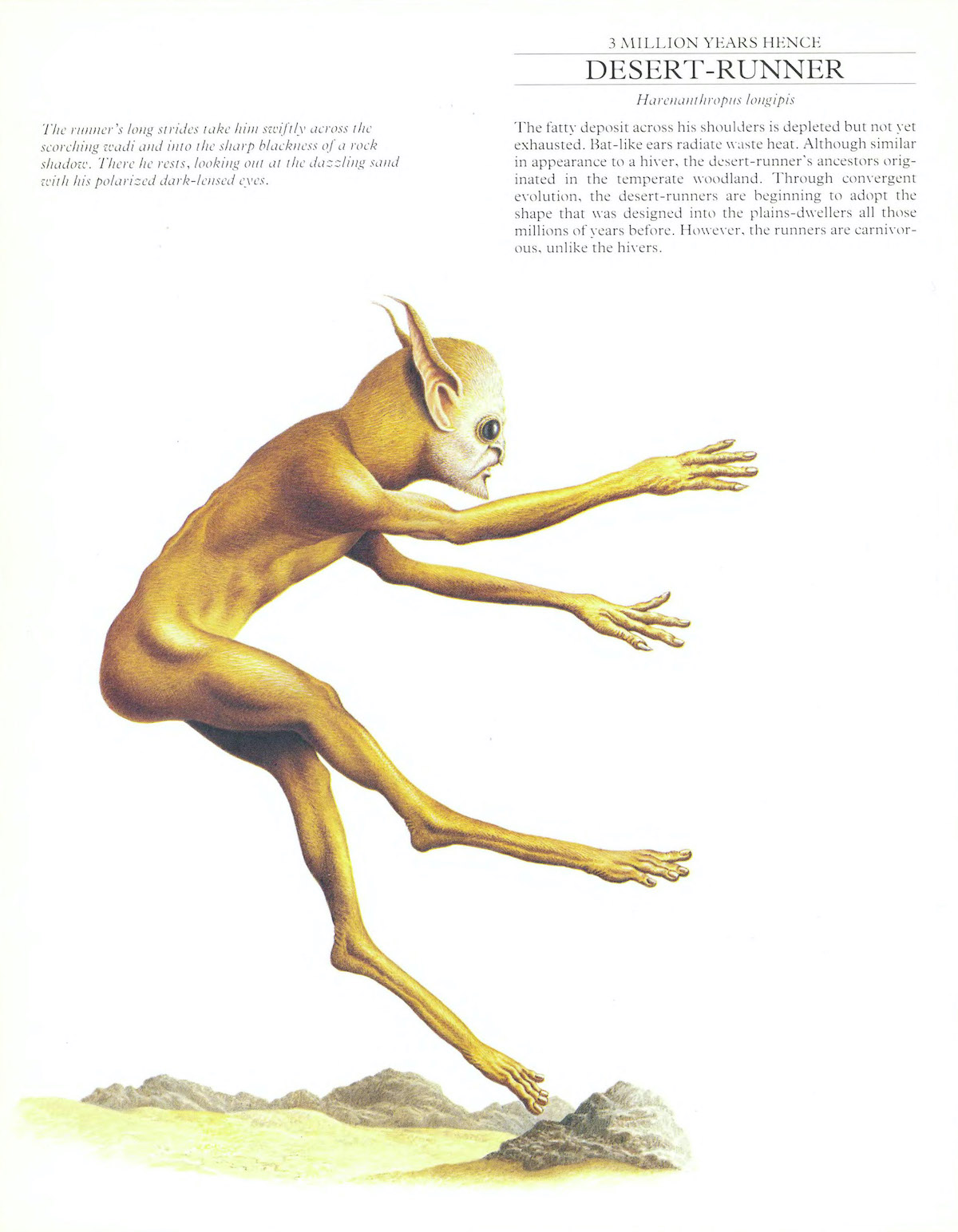


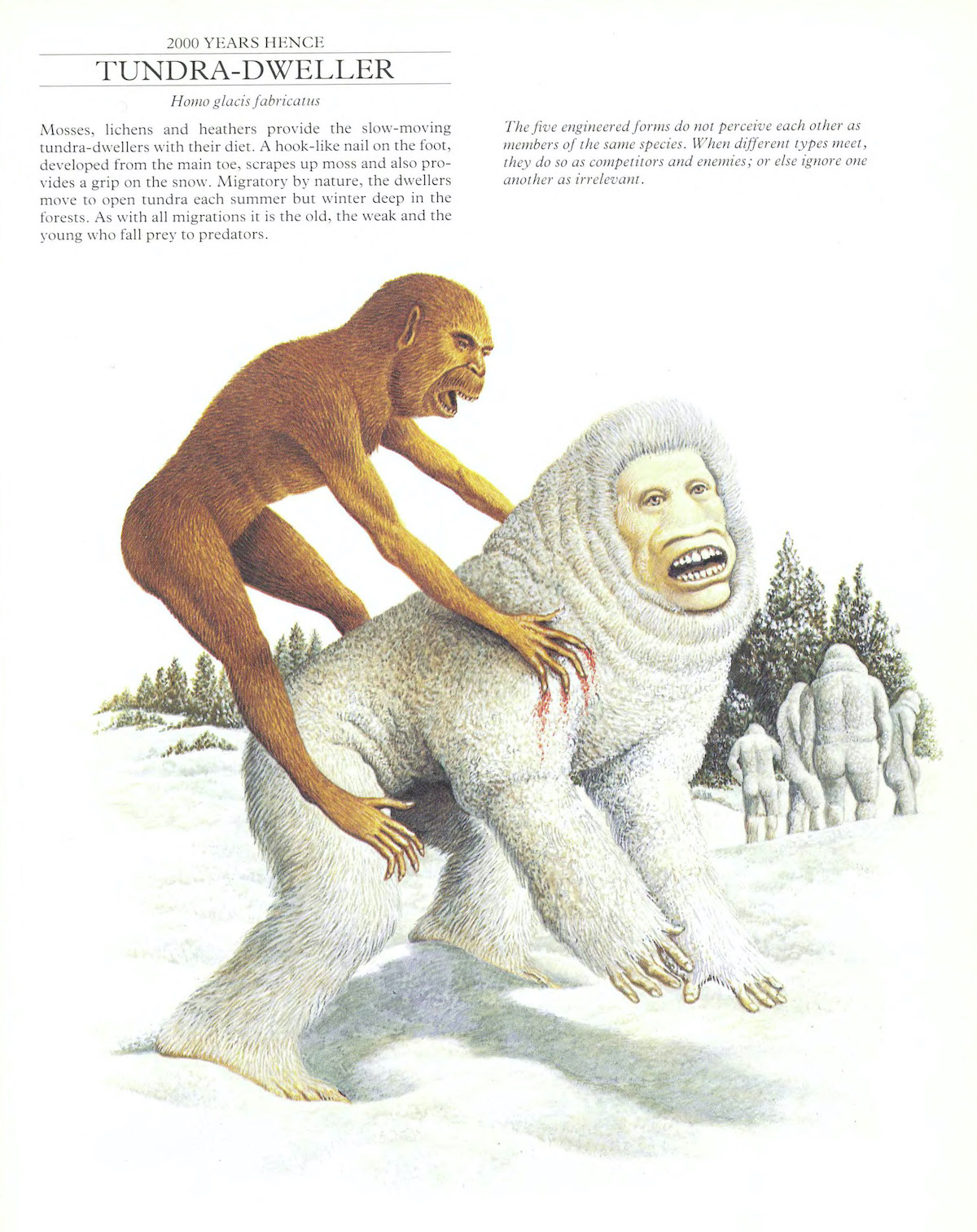

Via: Tom Cochien. Learn more about the artist, Dougal Dixon, at his website.
Would you like to support Flashbak?
Please consider making a donation to our site. We don't want to rely on ads to bring you the best of visual culture. You can also support us by signing up to our Mailing List. And you can also follow us on Facebook, Instagram and Twitter. For great art and culture delivered to your door, visit our shop.





